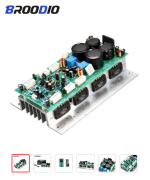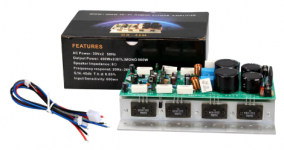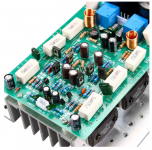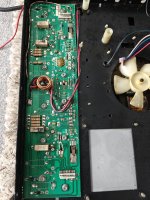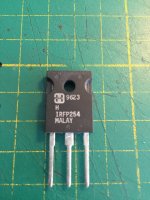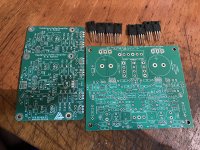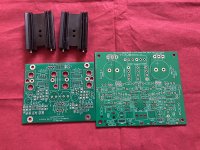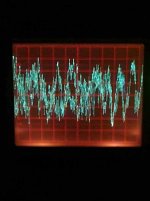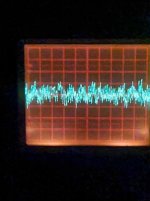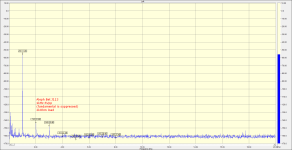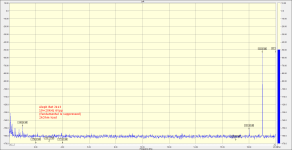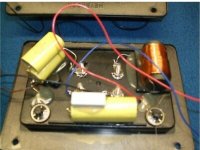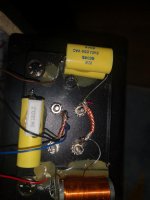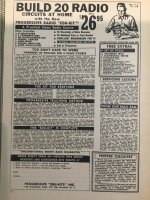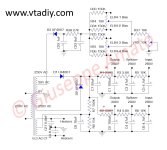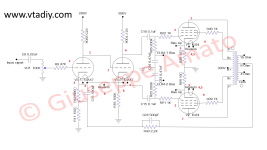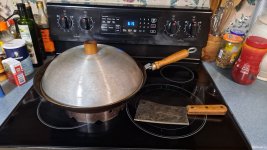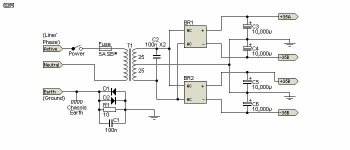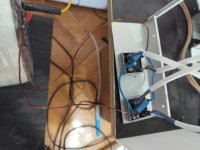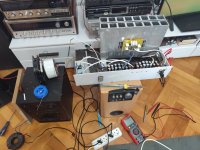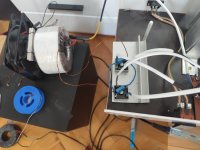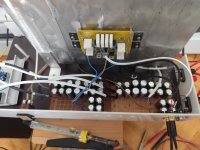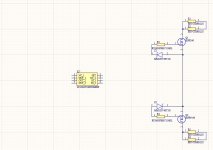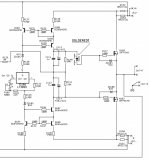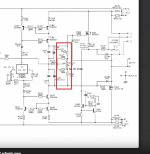Best (or less worse) way to use two dissimilar pairs of drivers
I have four 4 ohm, 40 mm drivers I wish to use to make two vented enclosures for 200 Hz up (flat above 200, hopefully). Each enclosure would have 2 drivers plus a tweeter.
However, these four drivers are two separate pairs, and they're slightly distinct, one pair having higher Fs and lower Vas than the other, but the rest of the parameters (like Xmax, DC resistance etc) being much more similar.
I already have an amplifier to use with them, but it can only use loads down to 4 ohm (at least in principle). So I should wire them in series.
And, if I want the left and right side enclosures to sound the same, I should, in principle, use one of each pair in each side, so each side would have 2 dissimilar drivers.
But coming to think about it, I think this would probably not be a good idea either.
To begin with, even if I made a separate cavity with its own vent for each driver, the fact they're in series is still a complication. They have different impedance curves, and I can't simulate each driver as if it were in series with a simple resistance, it's in series with another driver, that's not mechanically coupled to it anyhow.
And WinISD at least can't simulate that.
I thought for one second about measuring the TS parameters of them in series like they were a single driver, until I realized this would only make sense if their cones were also mechanically tied together, always moving as a single thing.
Maybe, then I should make each side using one pair, and just try and tune them to be the most similar as possible? Their phase response isn't going to be the same though.
Plus, a small question: Do you know if, when using more than 1 driver in a WinSD project, it considers they're in series or parallel? There isn't an option for that, that "voice coil connection" option is for drivers with a segmented voice coil, not for the connection between the drivers. I'd assume it considers they're in parallel.
If it considers they're in parallel, it's a further complication, as, in the case of using one pair in each side, I'd still like to wire them in series.
What would be the best way to go about this?
Thanks!
However, these four drivers are two separate pairs, and they're slightly distinct, one pair having higher Fs and lower Vas than the other, but the rest of the parameters (like Xmax, DC resistance etc) being much more similar.
I already have an amplifier to use with them, but it can only use loads down to 4 ohm (at least in principle). So I should wire them in series.
And, if I want the left and right side enclosures to sound the same, I should, in principle, use one of each pair in each side, so each side would have 2 dissimilar drivers.
But coming to think about it, I think this would probably not be a good idea either.
To begin with, even if I made a separate cavity with its own vent for each driver, the fact they're in series is still a complication. They have different impedance curves, and I can't simulate each driver as if it were in series with a simple resistance, it's in series with another driver, that's not mechanically coupled to it anyhow.
And WinISD at least can't simulate that.
I thought for one second about measuring the TS parameters of them in series like they were a single driver, until I realized this would only make sense if their cones were also mechanically tied together, always moving as a single thing.
Maybe, then I should make each side using one pair, and just try and tune them to be the most similar as possible? Their phase response isn't going to be the same though.
Plus, a small question: Do you know if, when using more than 1 driver in a WinSD project, it considers they're in series or parallel? There isn't an option for that, that "voice coil connection" option is for drivers with a segmented voice coil, not for the connection between the drivers. I'd assume it considers they're in parallel.
If it considers they're in parallel, it's a further complication, as, in the case of using one pair in each side, I'd still like to wire them in series.
What would be the best way to go about this?
Thanks!
